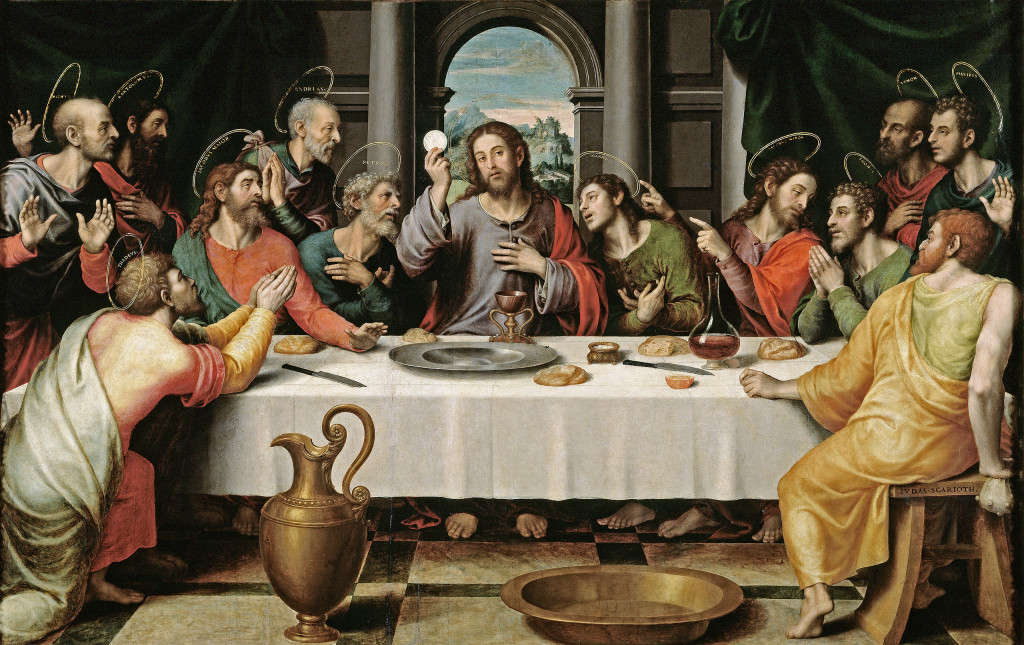We now turn to the liturgy and examine its capacity to lead souls to God through its beauty. Closely connected to the beauty of Christian art, the liturgy possesses great splendor, but is different in that it is a divine action.
[featured-image single_newwindow=”false”]
In fact, “Liturgy is not what man does, but is a divine work. The faithful need to be helped to perceive that the act of worship is not the fruit of activity…but is the expression of a mystery.”[1] (emphasis added)
It is this mystery, this transcendent act of God in the mundane world of man that has captured the hearts of men and women from all ages and times. Even Saint Augustine was enraptured by the beauty of the liturgy and led closer to the heavenly mystery of God. He recounts,
How I wept during your hymns and songs! I was deeply moved by the music of the sweet chants of your Church. The sounds flowed into my ears and the truth was distilled into my heart. This caused the feelings of devotion to overflow. Tears ran, and it was good for me to have that experience.[2]
For Augustine, the beauty of the Church’s liturgy reached the depths of his soul and even moved him to tears. More importantly, it caused the “feelings of devotion to overflow” and “the truth was distilled” in his heart.
Beauty and truth embraced and facilitated an experience with God. The liturgy contains within itself “gestures, symbols, words, images and melodies that touch the heart and the spirit and raise marvel and the desire to meet the resurrected Lord, He who is the Door of Beauty.”[3]
Yet, Augustine knew and realized that the beauty he heard must be put into proper context. In conversing with God, he recognized that it was “your hymns and songs” and “the sweet chants of your Church.” In other words, the beauty he experienced was united with the fact that it was God’s action and not man’s.
It is only in this context that the beauty of the liturgy can be used to lead people to God, for taken by itself it can lead to idolatry. The Second Vatican Council gave us a fundamental principle to follow in the document Sacrosanctum Concilium,
“1. Regulation of the sacred liturgy depends solely on the authority of the Church, that is, on the Apostolic See and, as laws may determine, on the bishop….
Therefore no other person, even if he be a priest, may add, remove, or change anything in the liturgy on his own authority.” (22.1,3)
The liturgy is an action of God and is governed by the Holy See. Any other innovations or subtractions made by priests, done without the permission of the Vatican or proper authority, are not in accord with what God has ordained.
The maxim, “say the black, do the red,” holds true and is what allows the beauty of the liturgy to shine forth. This means that all priests, even the most “traditional” of priests, can neither add nor subtract from the liturgy.
Without a foundation in the truth, the liturgy can easily become an idol that is worshipped. This holds true on both sides of the spectrum. The liturgy then become a spectacle, a performance, used by priests and laity to place emphasis not on God, but either the people involved or on the things used. The focus turns inward instead of outward towards God.
In summary, the beauty of the liturgy has great power and can be utilized by catechists, both to teach others about the divine mystery hidden in the liturgy as well as to foster beautiful encounters with God in Holy Mass and other liturgical events. However, its beauty can never be divorced from the truth, lest it be worshipped for its own sake.
Read the Entire Series
- Does the Church Accept or Reject Modern Art?
- Why Beautiful Art Leads Souls to God and Modern Art Does the Opposite
- How the Beauty of Creation Can Lead a Soul to God
- Why Does the Modern World Refuse to Listen to the Truth?
- Will the Beauty of Truth Alone Combat the Lies of Satan?
- Is Beauty a Temptation or a Path to God?
[1]The Via Pulchritudinis, §III.2
[2] Saint Augustine, On Christian Teaching, trans. R.P.H. Green, (New Work: Oxford University Press, 1997), 164.
[3] The Via Pulchritudinis, §III.3

